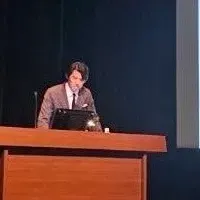
The Exodus of Generation Z Surgeons: A Call For Change in Healthcare Practices
Introduction
In a disconcerting trend, the European Society of Plastic, Reconstructive and Aesthetic Surgery (ESPRAS) has spotlighted a significant shift within the surgical workforce fueled by the emerging influence of Generation Z. Born between 1997 and 2012, this cohort, known for being true 'digital natives', is reshaping expectations around work culture in various professions, including surgery. A recent study conducted by ESPRAS reveals that many surgeons from Generation Z are opting for lucrative positions in aesthetic surgery at the expense of careers in reconstructive surgery. This worrying shift raises critical questions about the sustainability of public healthcare practices moving forward.
The Shift Towards Aesthetic Surgery
The study published by ESPRAS surveyed surgical directors across Europe and the United States, underscoring a new preference among these young surgeons to focus their careers in the aesthetic sector, which offers greater financial rewards compared to the often underfunded realm of reconstructive surgery. While this trend could be seen as a natural transition to private practice, it simultaneously presents the possibility of a serious shortage in reconstructive procedures, which are vital for trauma victims and those requiring surgeries to restore functionality.
Mark Henley, a leading consultant plastic surgeon and president of ESPRAS, said, "What Generation Z has shown us is the urgent need to reassess the surgical landscape, emphasizing the balance and well-being of our workforce. The shift they are instigating, although concerning at first glance, necessitates an immediate reevaluation that acknowledges the need to provide comprehensive services to patients while also supporting colleagues in achieving a balanced life."
Implications for Public Healthcare
The implications of this shift are multifaceted. A potential depletion of reconstructive surgeons could adversely affect public healthcare systems that depend on these specialists for critical medical procedures. Essential surgeries for accident victims or patients suffering from congenital disabilities might face longer wait times, posing risks to patient health. Moreover, it raises the question of how public healthcare practices can adapt to retain healthcare professionals in an increasingly competitive landscape driven by profit.
Generation Z's Influence on Work Culture
Interestingly, the study not only highlights the preference for aesthetic surgery but also points to a more profound cultural shift instigated by Generation Z. This generation is advocating for reduced working hours, better work-life balance, and a departure from hierarchical mentorship models in favor of more egalitarian and collaborative working relationships. This modification in work dynamics could significantly alter current practices, especially concerning trauma response and patient care quality.
The findings illustrate the need for healthcare institutions to rethink schedules and incorporate practices that promote well-being not only for surgeons but for all operating personnel. With the adoption of holistic patient care models and improved resource allocation, the healthcare landscape could better balance patient needs alongside those of medical professionals.
The Path Forward
Addressing these changes proactively could potentially mitigate the negative consequences of the current exodus towards private aesthetic practices. By creating an environment that supports a comprehensive care approach while fostering professional development and mentorship opportunities, healthcare systems can retain talented surgeons in reconstructive medicine. The urgent call is clear: without addressing these concerns, the significant benefits of mentorship and quality care may diminish, affecting both patients and the medical community.
In summary, Generation Z is not just reshaping industries; they are redefining professional landscapes, compelling traditional fields like surgery to adapt or risk losing their most promising talent to fields that focus more on patient aesthetics than on vital reconstructive needs. As we look ahead, it is essential that healthcare organizations reflect on these trends and act decisively to ensure that public healthcare continues to serve its fundamental role in society effectively.
Topics Health)










【About Using Articles】
You can freely use the title and article content by linking to the page where the article is posted.
※ Images cannot be used.
【About Links】
Links are free to use.